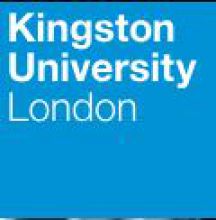England’s abolition of student number controls has unleashed competition that could fundamentally alter the nature of some universities, as well as offering tempting prospects to for-profit providers, according to sector experts.
On 26 January, Ucas published data on how the 2016 entry cycle panned out for individual universities, showing dramatic shifts that come as the sector is facing student number uncertainty on several fronts, including over Brexit.
Analysis by Times Higher Education shows that four English universities – London Metropolitan University, the University of East London, the University of Cumbria and Kingston University – have seen their numbers of new UK and European Union students fall by more than 30 per cent since 2011, the year before the government began to lift student number controls in England.
Meanwhile, three universities – Aston University, Coventry University and the University of Surrey – have grown their numbers by more than 50 per cent since 2011.
Comparing 2016 recruitment with 2015 provides a more up-to-date insight into trends. Of the seven institutions seeing a fall of 10 per cent or greater in UK and EU total acceptances in just that single year, six are post-92 institutions. The group also includes Russell Group member the University of Southampton.
However, there are five newer universities among the top 10 institutions with the largest rises by percentage, all of them smaller modern universities.
The Home Office is also planning to “differentiate” between different types of universities in terms of their access to non-EU students, where growth in numbers has already turned into stagnation sector-wide. Meanwhile, Brexit threatens to radically cut the number of EU students entering the UK, who make up 20 per cent or more of the postgraduate student body at 12 universities and the same proportion of the undergraduate body at three institutions.
And prime minister Theresa May’s plans to create vocational Institutes of Technology that offer a “credible alternative” to university was accompanied by government briefings that it was “unwise to force less academic pupils into the straitjacket of university”, representing a further potential cut to numbers.
Phil McNaull, chair of the British Universities Finance Directors Group, noted that overseas numbers were key to building a surplus that cross-subsidises research. “If your student numbers are going down, and if a significant number of those students...are overseas students, then yes, you’ve got a problem, because you’re starting to put pressure on your surplus,” he added.
Bob Rabone, chief financial officer at the University of Sheffield, said of the Ucas figures that “5 per cent volume change per annum is large but not an insurmountable difficult scale of change.
“However, if it’s consistently the case over several years, this will change the shape of an institution and not necessarily in a planned way, but as a consequence of market movements and other external factors.
“An institution that isn’t able to respond is likely to show this stress in the quality of its academic activity as much as its financial performance.”
Mr Rabone noted that the trends revealed in the Ucas figures “are only one of the variations. If these are also combined with major shifts in EU or non-EU international students at a particular institution, one can envisage the scale of change being very difficult to cope with.”
The government is also pursuing measures to ease and increase the entry of new private providers into the English sector. Ministers have suggested that US tech firms such as Google or Facebook could enter, while US for-profit higher education firms may be other potential candidates.
Mr McNaull said of the institutions seeing big rises: “If existing players – albeit some of them quite well-recognised, strong brand names – can see that sort of growth, somebody with the opportunity to enter the sector [may decide] it was not as risky as they first thought, that the transfer of students from one institution to another could happen fairly easily.”
Pam Tatlow, chief executive of MillionPlus, the association of modern universities, said that some institutions have adopted a “policy of trying to improve the quality of entrants” by raising entry thresholds, which explains the fall in numbers at some institutions.
She also said that the new funding regime introduced when fees trebled to £9,000 in 2012 “does nothing for part-time and mature students”, a key focus for post-92 universities.
Ms Tatlow added that Brexit presented “risks across the whole sector” and that the uncertainty over future access for EU students was just as significant as research funding as an issue.
Top risers: UK and EU acceptances year-on-year
|
Institution |
2015 |
2016 |
% change |
|
1,540 |
1,995 |
29.5 |
|
|
2,910 |
3,410 |
17.2 |
|
|
1,730 |
2,015 |
16.5 |
|
|
3,150 |
3,665 |
16.3 |
|
|
Bucks New University |
2,305 |
2,585 |
12.1 |
|
3,550 |
3,945 |
11.1 |
|
|
3,125 |
3,470 |
11.0 |
|
|
4,935 |
5,475 |
10.9 |
|
|
2,210 |
2,445 |
10.6 |
|
|
3,620 |
4,000 |
10.5 |
Biggest fallers: UK and EU acceptances year-on-year
|
Institution |
2015 |
2016 |
% change |
|
4,445 |
3,845 |
-13.5 |
|
|
Southampton Solent University |
3,225 |
2,795 |
-13.3 |
|
1,645 |
1,435 |
-12.8 |
|
|
2,405 |
2,130 |
-11.4 |
|
|
5,065 |
4,505 |
-11.1 |
|
|
University of Central Lancashire |
6,135 |
5,475 |
-10.8 |
|
5,425 |
4,885 |
-10.0 |
|
|
6,830 |
6,185 |
-9.4 |
|
|
9,245 |
8,470 |
-8.4 |
|
|
3,705 |
3,410 |
-8.0 |
Register to continue
Why register?
- Registration is free and only takes a moment
- Once registered, you can read 3 articles a month
- Sign up for our newsletter
Subscribe
Or subscribe for unlimited access to:
- Unlimited access to news, views, insights & reviews
- Digital editions
- Digital access to THE’s university and college rankings analysis
Already registered or a current subscriber?











